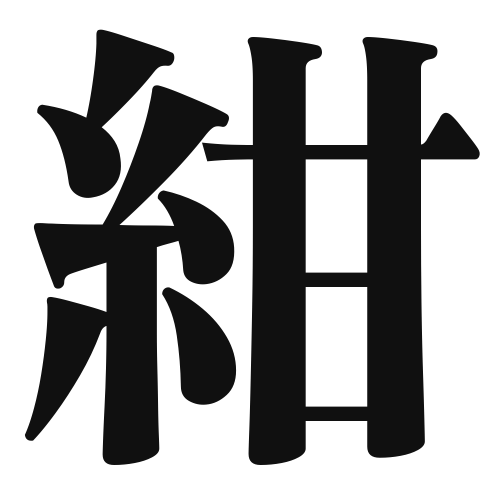1. Overview of Meaning
The kanji “紺” (kon) refers to a deep blue color, often associated with navy blue. It is commonly used to describe the color of clothing, objects, and even the sky at dusk.
2. Formation and Radical
Formation of the Kanji: The kanji “紺” is a phonetic-ideographic character (形声文字) that combines the radical for “thread” (糸) with a phonetic component that suggests its pronunciation.
Radical: The radical of “紺” is 糸 (ito), which relates to textiles and threads, reflecting the kanji’s connection to fabric colors.
3. Examples of Usage
Common Words and Phrases: Some frequently used words that include “紺” are:
- 紺色 (こんいろ, koniro) – navy blue
- 紺のスーツ (こんのスーツ, kon no sūtsu) – navy suit
Example Sentences in Daily Conversation:
- 「彼は紺色のシャツを着ています。」(かれはこんいろのシャツをきています。) – “He is wearing a navy blue shirt.”
- 「この紺のバッグはとてもおしゃれです。」(このこんのバッグはとてもおしゃれです。) – “This navy bag is very stylish.”
4. Synonyms and Antonyms
Similar Kanji: A similar kanji is “青” (あお, ao), which means blue but can refer to a broader range of blue shades, including lighter tones.
Opposite Kanji: An antonym is “赤” (あか, aka), which means red, representing a color that is visually and symbolically opposite to blue.
5. Cultural and Historical Background
Connection to Japanese Culture: The color navy blue has significant cultural importance in Japan, often associated with traditional clothing such as kimono and uniforms.
Proverbs and Idioms: While there may not be specific proverbs that directly reference “紺,” the color is often used in expressions related to calmness and depth, reflecting its serene qualities.
